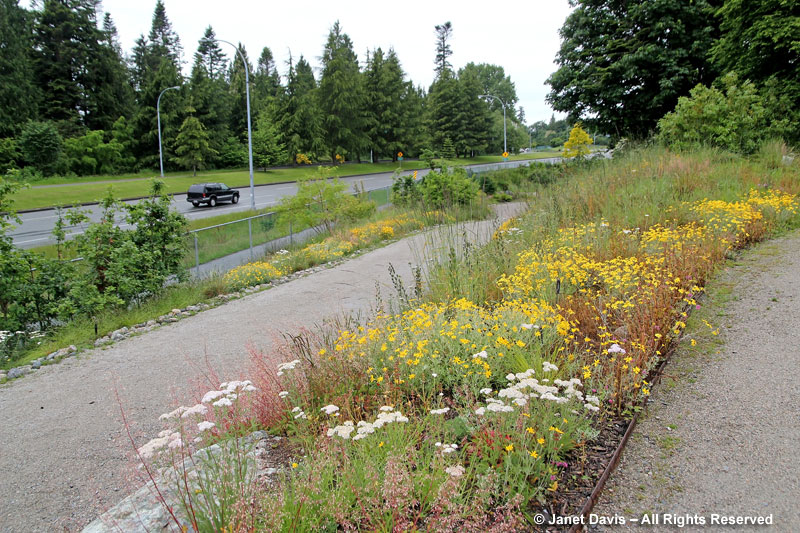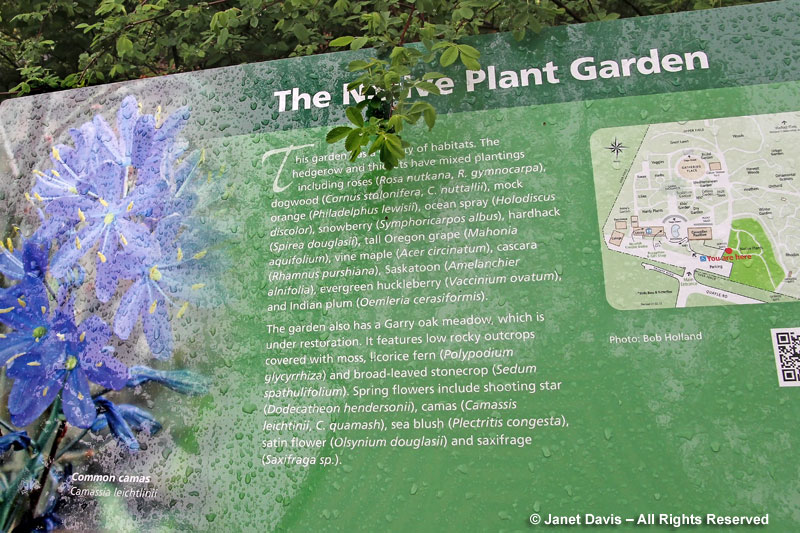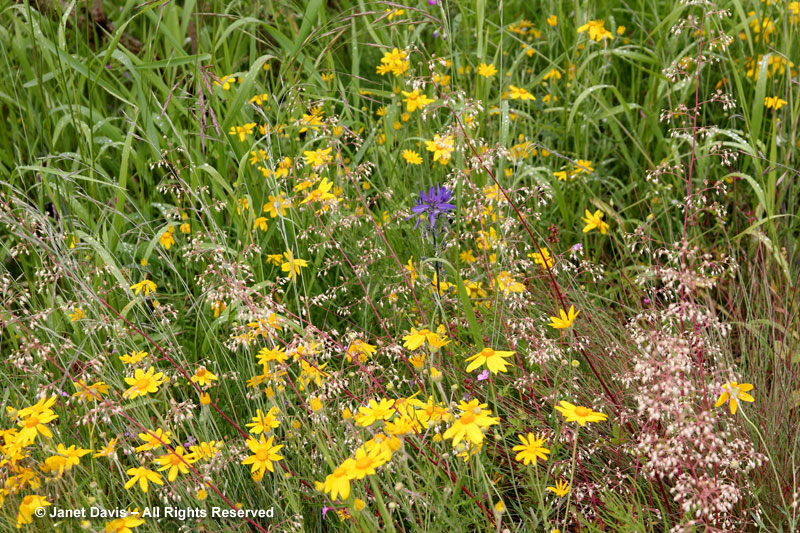I was very fortunate during my recent week in British Columbia to see two Garry Oak Meadows in public gardens. And ironic, in a way, for though I spent my first ten years as a little girl in Victoria, likely skipping through the oak meadows in Beacon Hill Park filled with azure-blue camas and snow-white fawn lilies, I had no idea what a charmed environment I was taking for granted. Imagine seeing this (photo taken at my cousin and fruit guru Bob Duncan’s tiny Garry Oak meadow in Sidney), and not being mesmerized, even as a child. 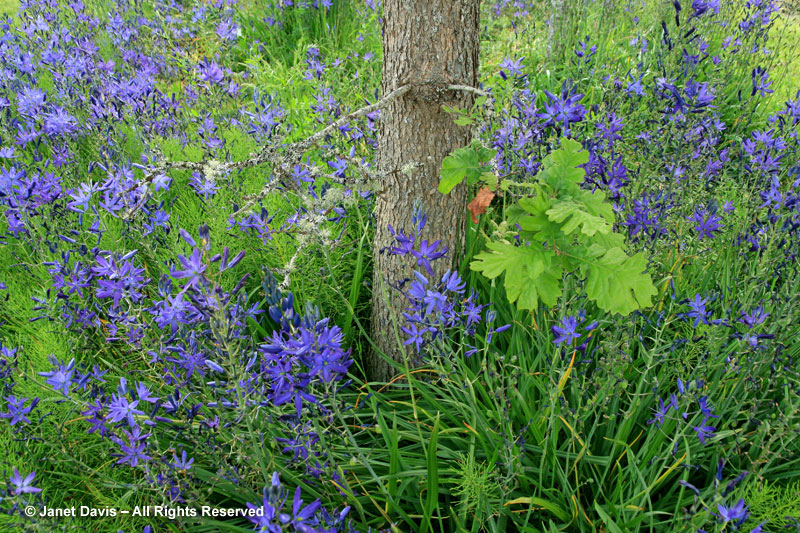
The Garry Oak ecosystem celebrates the floral associations of the only oak native to British Columbia, Washington State and Oregon, Quercus garryana. (Its range also extends into parts of California). Drought-tolerant and rugged, the garry oak is a transitional species that depends on disturbance (historically fire) to forestall the succession of meadow and oak woodland to Douglas fir forest. And as my friend Philip Van Soelen of California Flora Nursery says: “For thousands of years Native Americans were managing these Garry oak ecosystems in a form of permaculture. The fire which kept the conifers at bay was their primary & most powerful tool. The native bulbs, wildflowers & acorns were important food supplies”
Nevertheless, it is a fragile plant community threatened by development, a deadly gall wasp and oak leaf phylloxera. It is so near and dear to British Columbians that there’s even an association and website devoted to it, The Garry Oak Ecosystems Recovery Team. So it was a thrill, on my very first day, to visit the Horticultural Centre of the Pacific in Saanich, Victoria and meet members of the HCP Native Plant Partnership Group standing in the rain, eager to give tours of the small Native Plant Garden and the recovering Garry Oak Meadow within it. The sign at the edge listed the plants one could expect to see at various times of the year.
The entrance was spangled with great blue camas (Camassia leichtlini ssp. suksdorfii) and Oregon grape (Mahonia aquifolium). Appropriately, there was a native bee nesting box as well. 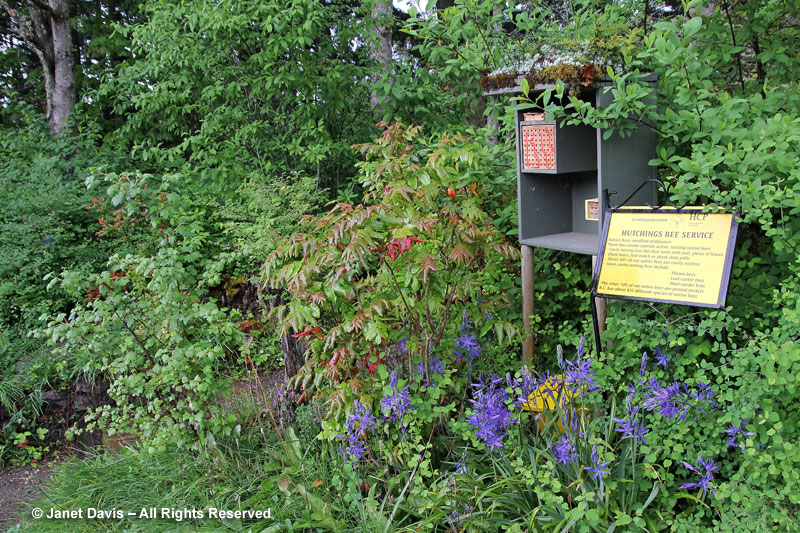
And as we set out in the rain, I marvelled that we were now celebrating an environment that so many of us take for granted or ignore completely as being “just bush”, with the rotting stumps hosting huckleberries and bigleaf maple sprouting where it found a little sunshine. My tour guide told me they hear this from visitors all the time. “How nice that you’ve left this in its natural state,” they declare. Only she and the other volunteers know how much work has gone into this woodland treasure, now 14 years since its beginning as a barren lawn with picnic tables and orchard grass. 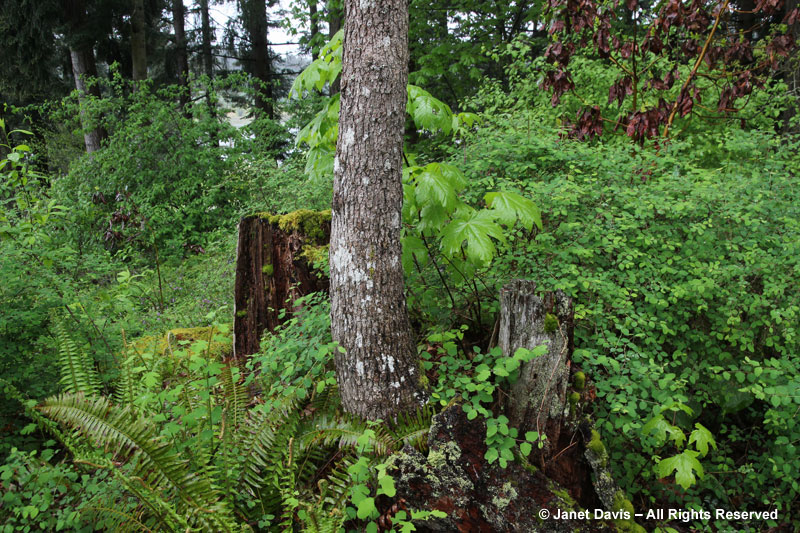
The garry oaks were just coming into leaf, their branches dripping with moss. 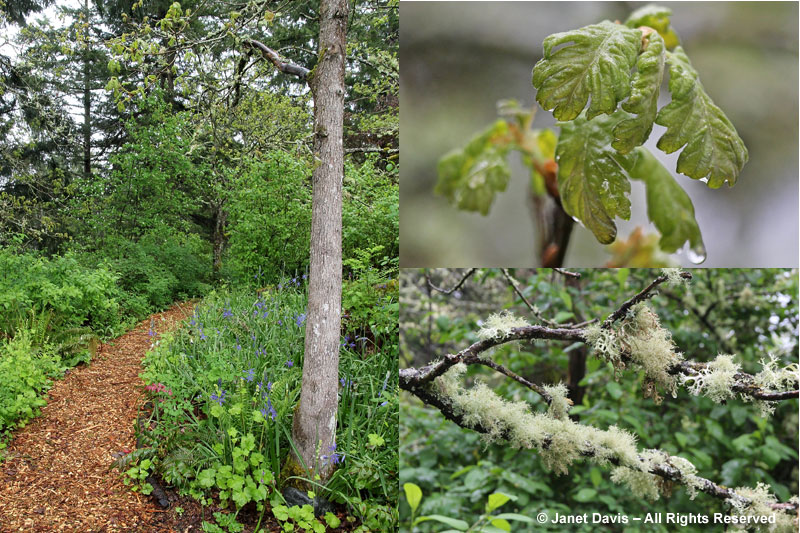
And at the base of their trunks grew the spring wildflowers that have partnered with them from time immemorial. The shooting stars (Dodecatheon pulchellum) were almost finished here, but there were still a few shimmering white fawn lilies (Erythronium oregonum). 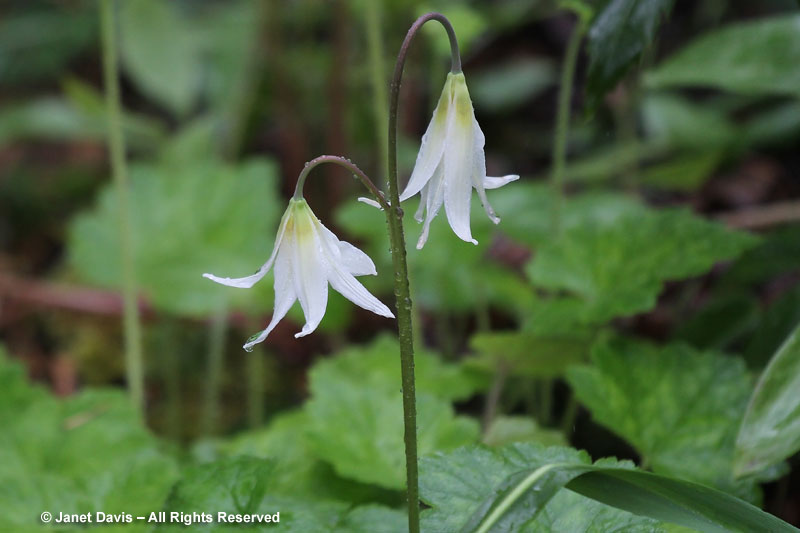
And I found one or two western white trilliums (T. ovatum) now aging to pink, and a few chocolate lilies (Fritillaria affinis var. affinis) still nodding their dusky brown heads. 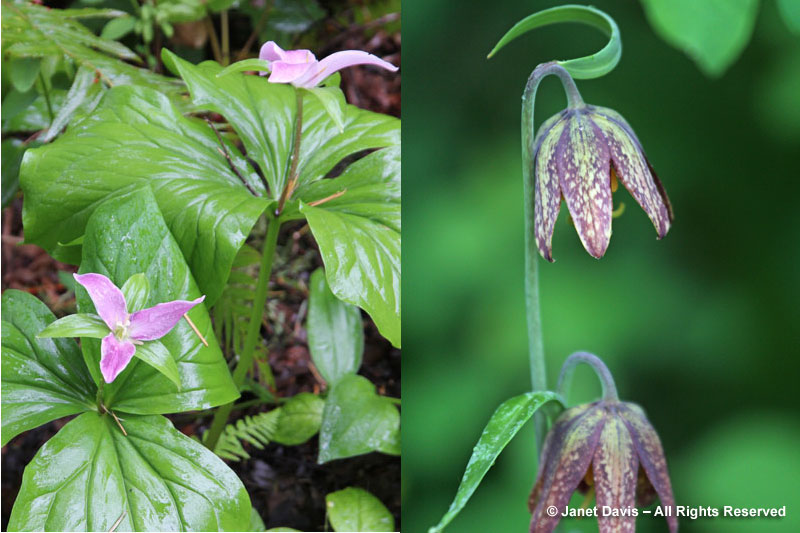
The volunteers used naturescaping principles: watering only to establish plantings; no fertilizer or pesticides; sheet mulching; weeding out invasives; path-building; and design of a hedgerow and bog. They were exceedingly proud of their artfully-designed stump plantings. 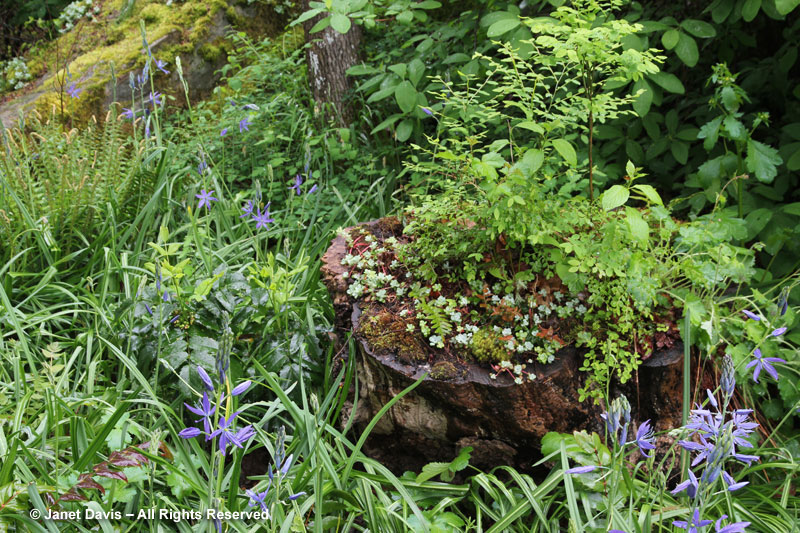
And they pointed out the licorice ferns (Polypodium glychirriza) on moss-covered rocks that look so natural, you’d never guess the boulders were brought in for just that task. 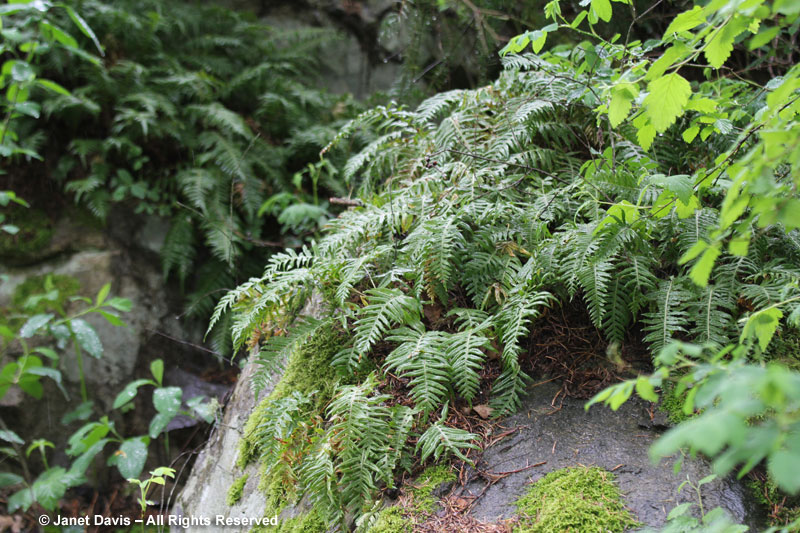
It was late afternoon when I thanked the volunteers and bade them farewell, but I would think of them later that week when I made my annual visit to the University of British Columbia Botanical Garden. For there, adjacent to bustling S.W. Marine Drive with the David Lam Asian Garden on the far side of the road and forming the entrance to the alpine garden and edible garden on this side was a beautiful Garry Oak Meadow of an entirely different kind. 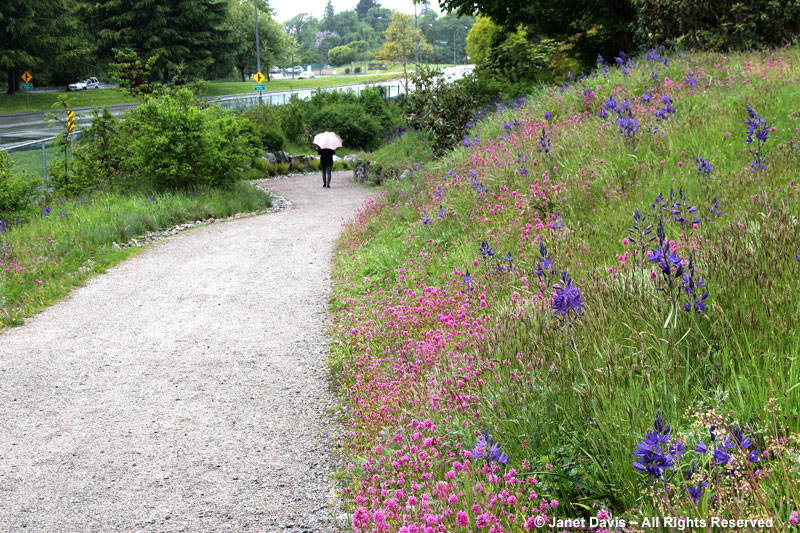
Begun in 2006, it is a nod to the iconic ecosystem, though not a recreation, since Garry oaks did not typically grow in this area. But it allowed UBC to feature the beautiful native plants in a high-traffic spot. I was wowed by the meadow filled with annual pink sea blush (Plectritis congesta) interspersed with great camas (C. leichtlinii ssp. suksdorfii). 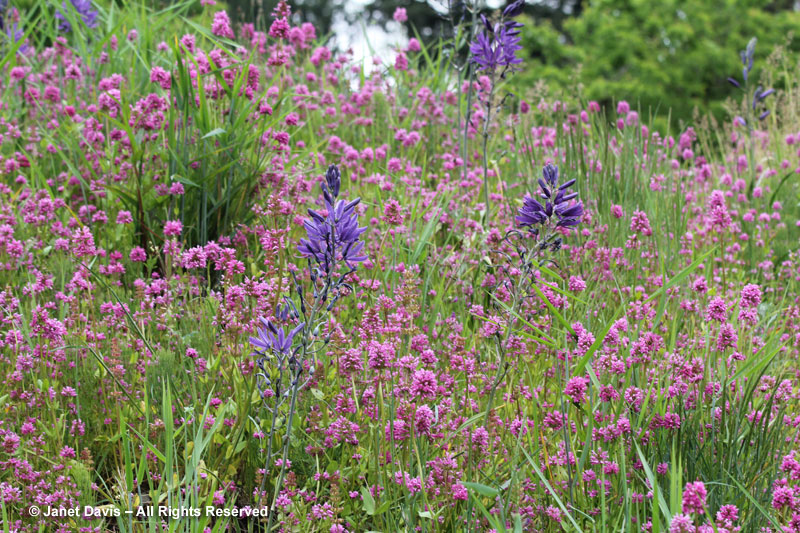
Small camas (C. quamash) had already bloomed, but I was able to detect one of the significant clues to telling the difference between the two, since great camas has the endearing trait of twisting its withered tepals around the forming fruit to protect it. 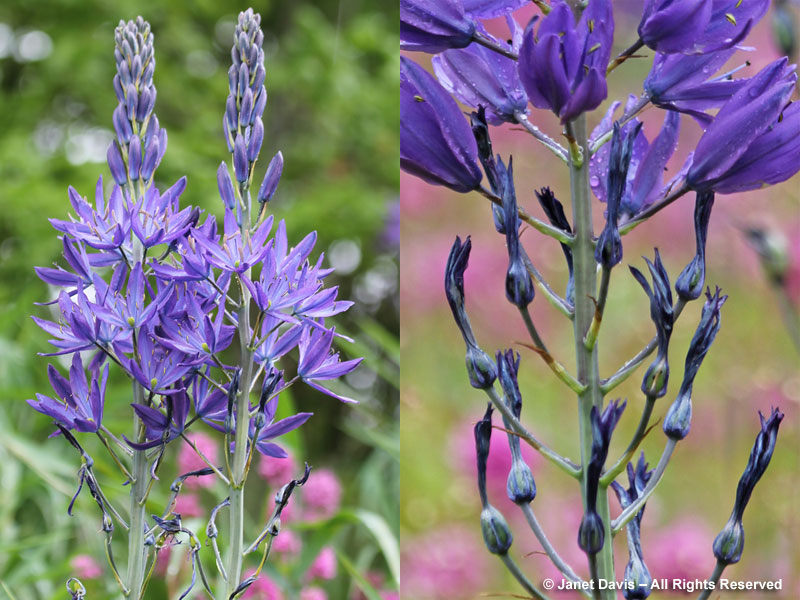
Here and there amongst the pink sea blush were brilliant splashes of spring gold (Lomatium utriculatum). 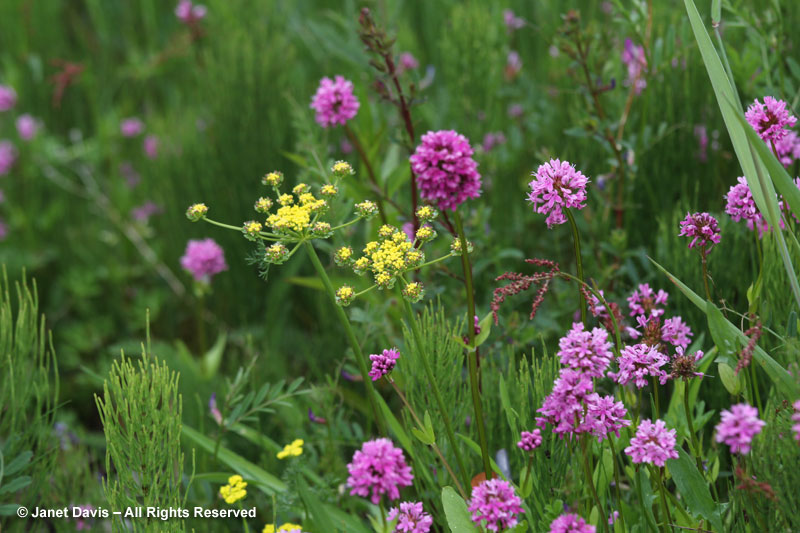
I was so happy to have seen my second Garry Oak meadow at this spectacular pink-and-purple stage, since in just a few weeks’ time, the meadow will have transformed itself into a cheerful expanse of woolly sunflower (Eriophyllum lanatum) and yarrow. 